Damen Presents ‘Gone With the Wind'
Marco Bovio, Senior Research Hydromechanics Engineer at Damen, presented details of internal research Computational Fluid Dynamics (CFD) based project ‘Gone With The Wind’ (GWTW). For the past two years Damen has been conducting a review of CFD technology and its applications in the maritime industry, and GWTW has been addressing one specific aspect of this. Its purpose, to look at the capability of CFD to accurately model the aerodynamic forces that act upon vessels above the waterline, as a separate analysis to those CFD studies that focus on the interactions that occur below the surface. The specific issue being addressed has been the challenge of meeting the requirements of the IMO regulation 749.18.
Wärtsilä Wins Contract for New CLdN RoRos
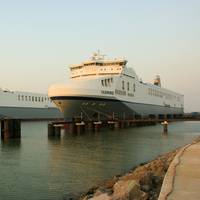
Wärtsilä said it has been awarded a contract to supply controllable pitch propellers and power take off / power take home (PTO/PTH) shaft generator systems for two new RoRo vessels being built at the Uljanik shipyard in Croatia. The ships have been ordered by the Luxembourg based operator, CLdN Ro-Ro SA. There is an option for an additional two vessels. Wärtsilä, which booked its orders in December 2016 and February 2017, will supply the vessels with its latest design, WCP G-hub, optimized for high power density.
CFD Simulation of a Fully Featured Offshore Platform Model
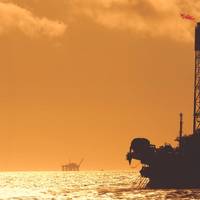
CFD simulations of offshore oil and gas platforms are used to predict the maximum wind loads acting on the structure of the platform topsides (the upper half of the platform, above sea level and outside the splash zone, including the oil production plant, the accommodation block and any drilling equipment). The wind loads are used as waves and current loads to design the mooring of the structure, and can be significant in specific ocean areas. Because platform topside geometries were traditionally considered too complex to mesh in high detail…
World’s First Full Scale Numerical Modelling Workshop
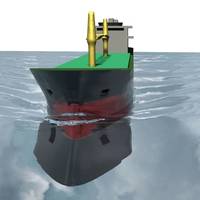
Lloyd’s Register (LR) hosted the world’s first workshop on full scale hydrodynamic computer simulations at their Global Technology Center in Southampton last month. Ship designers from around the world came together with the aim of building confidence in the accuracy of ship scale Computational Fluid Dynamics (CFD) modelling within the marine sector. This is the first time that the industry has openly compared full scale CFD with comprehensive measurements. Through comparisons of blind simulation results submitted by participants…
'Singing' Propellers Phenomenon Controlled
A joint research project carried out by Wärtsilä and City University London has succeeded in identifying the specific design parameters that create the risk of 'singing' propellers. Though rare, 'singing' is nevertheless an annoying problem that occurs as a strong tonal noise originating from the propeller, thus causing a negative effect to onboard comfort levels. The research programme reached its conclusions in December 2015. The problem has long been recognised in the marine industry. While the general perception has been that the frequency of the propeller blades' vibration mode coincides with the frequency of the hydrodynamic excitation forces at the trailing edge of the blades, the current research indicates that there is more complexity and sensitiveness to this hypothesis.
Conflicting Objectives in Ship Design
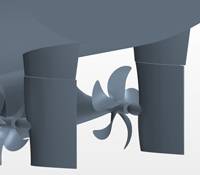
“ABS is first and foremost a safety company,” says Richard Korpus, “but safety can arise on many different fronts. Dr. Korpus is Chief Scientist, Computational Fluid Dynamics (CFD) for the American Bureau of Shipping. In this role Korpus supports the Chief Technology Officer (CTO) and underlying organizations through a focus on developing and applying CFD technology. He believes CFD has the potential to change how some of the most challenging problems in marine and offshore classification are solved in the future.
New Standard in Propulsion Efficiency and Onboard Comfort
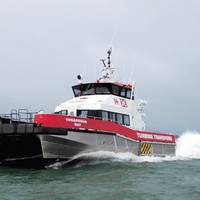
According to the manufacturer, the propulsion system has performed convincingly all along the line and surpassed the expectations of her owner, the Welsh company Turbine Transfers Ltd, a subsidiary of Holyhead Towing Company. The VLJs are the main propulsion system of the DNV Classed 21m offshore service catamaran, which was designed for Turbine Transfers by BMT Nigel Gee and built by AMC. The Crew Transport Vessel will take service technicians to offshore wind farms at sites all around Europe, initially at the Westernmost Rough site off the Humber for Dong Energy.
New Fixed Pitch Propeller Design from Wärtsilä
Wärtsilä introduced the FPP Opti Design, a new fixed pitch propeller (FPP) design concept. According to Wärtsilä, the new design offers fuel savings of up to 4 percent and highly reliable full scale performance predictions. The concept has been developed utilizing the latest computational fluid dynamics (CFD) technology. The Wärtsilä FPP Opti Design has been developed at the company’s Technology and Service Centre in the Netherlands, and is the result of highly experienced design engineers having access to the very latest and most sophisticated software and analysis tools. CFD calculations analyze not only the propeller performance but most importantly also, the interaction between the propeller and hull.
ABS Appoints Chief Scientist for CFD
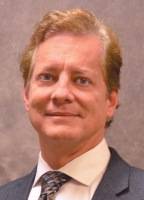
ABS, a provider of maritime and offshore classification services, appointed Dr. Richard Korpus as Chief Scientist, Computational Fluid Dynamics (CFD). In the Chief Scientist role, Korpus will support the Chief Technology Officer (CTO) and the organization through his focus on developing and applying CFD technology. "We see technology as the road forward," said ABS Chairman and CEO Christopher J. Wiernicki. The creation of this Chief Scientist position is the most recent step in the continuing process of technology investment at ABS.
Finite Element Solutions
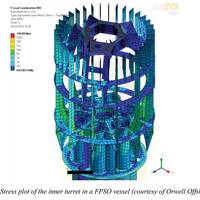
The international marine industry faces unprecedented challenges today. Energy costs are rising, as are concerns about reduced pollutant emissions, water ballast treatment and other environmental impacts. A tight credit market and cash-strapped operators mean that engineers must deliver designs with a high degree of fidelity and reliability while reducing the development cycle. Extreme weather, hazardous cargoes and other challenging operating conditions present the need to continually innovate, implement new materials and deliver analyses confidently.
SOIC selects Nupas-Cadmatic for CAD/CAM
SOIC has selected Nupas-Cadmatic for 3D CAD/CAM to create increasingly intricate designs of ships and vessels. After doing research about possible software suppliers, SOIC invited the selected companies for demonstrations. Nupas-Cadmatic performed the best and met the demands of SOIC. Both companies decided to start with a pilot project. SOIC placed an order with Nupas-Cadmatic after the three month trial was successfully completed. Ship and Ocean Industries R&D Center, also known as SOIC, was established in 1976 under the sponsorship of the Ministries of Economic Affairs, National Defense, Communications, and Education and with donation from several large contractors.





